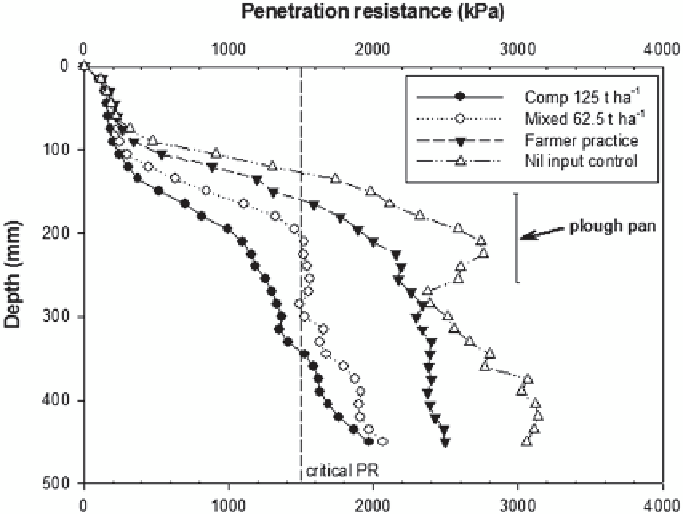Agriculture Reference
In-Depth Information
Fig. 7.11
Average penetration resistance (kPa) within the top 45 cm of the soil profile for each
treatment
also apparent in, that a 'plough pan' or compaction layer is already present at 15 to
20 cm depth in the control treatment soil and appears to be starting to form in the
farmers practice treatment soil at a similar depth. Absence of 'plough pan' forma-
tion in the compost treatment is thought to be a consequence of better drainage
due to improvements in soil structure, which has resulted in a lower soil moisture
content at plough depth, and as such less shearing stress and compaction of the soil
at the plough depth during tillage operations.
7.3.2.2
Soil Chemistry
The application of blended cGO compost at high rates (125 dry t ha
−1
) resulted in
improvements to many key soil chemical properties generally associated with soil
quality including cation exchange capacity (eCEC) important for nutrient storage,
total organic C, plant available potassium (exch. K), exchangeable calcium (exch.
Ca), plant available phosphorus, and pH, and many of these benefits persisted for
several crops (Eldridge et al.
2014
). The soil test results (0-15 cm depth) for the
compost field trial treatments are presented in Table
7.3
for crops 1 and 4 and in
Table
7.4
for crop 3. The main disadvantage of large applications of compost was
a moderate increase in soil salinity in the short term immediately after application
(Table
7.3
). This means that crops sensitive to salt such as lettuce should be avoided

